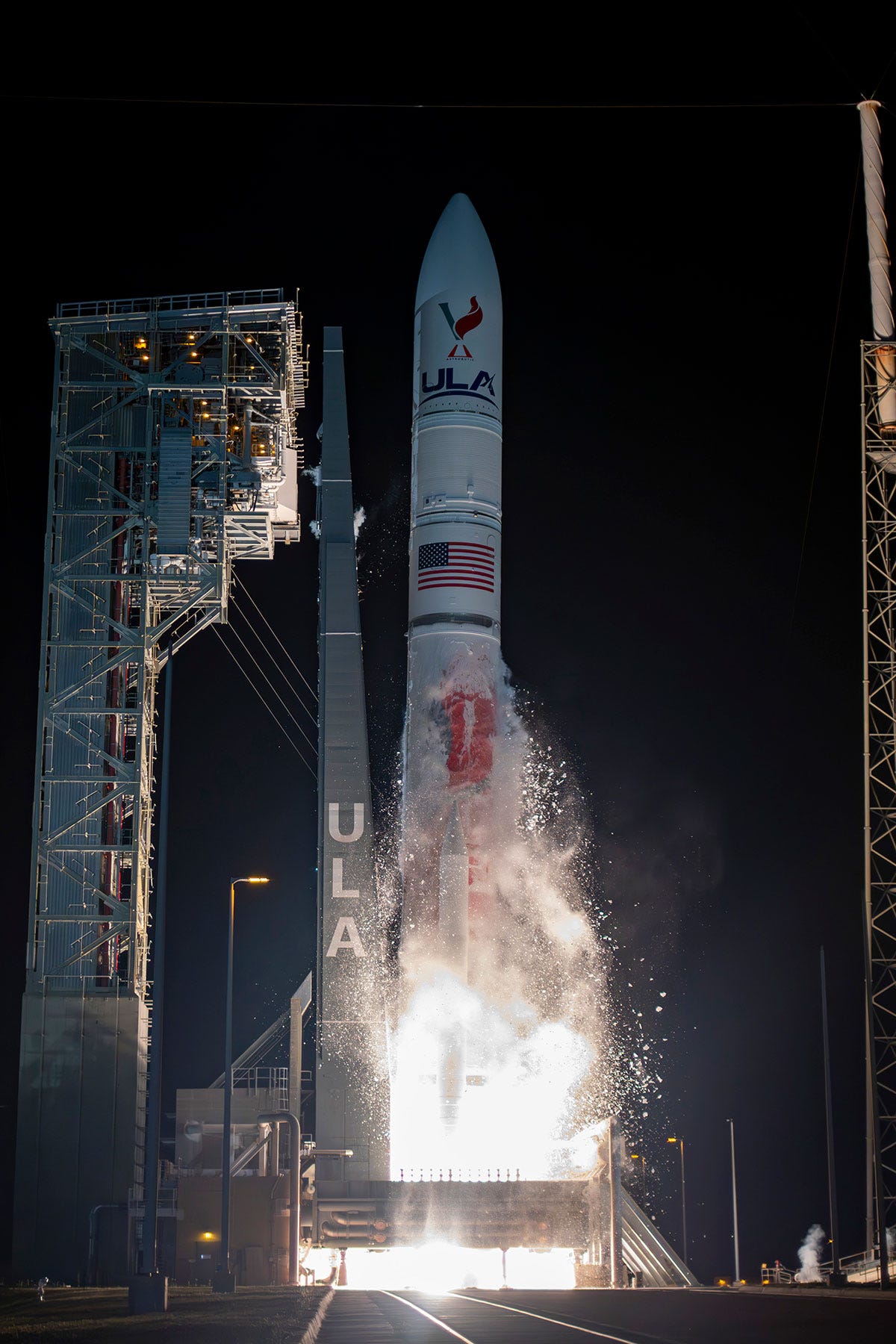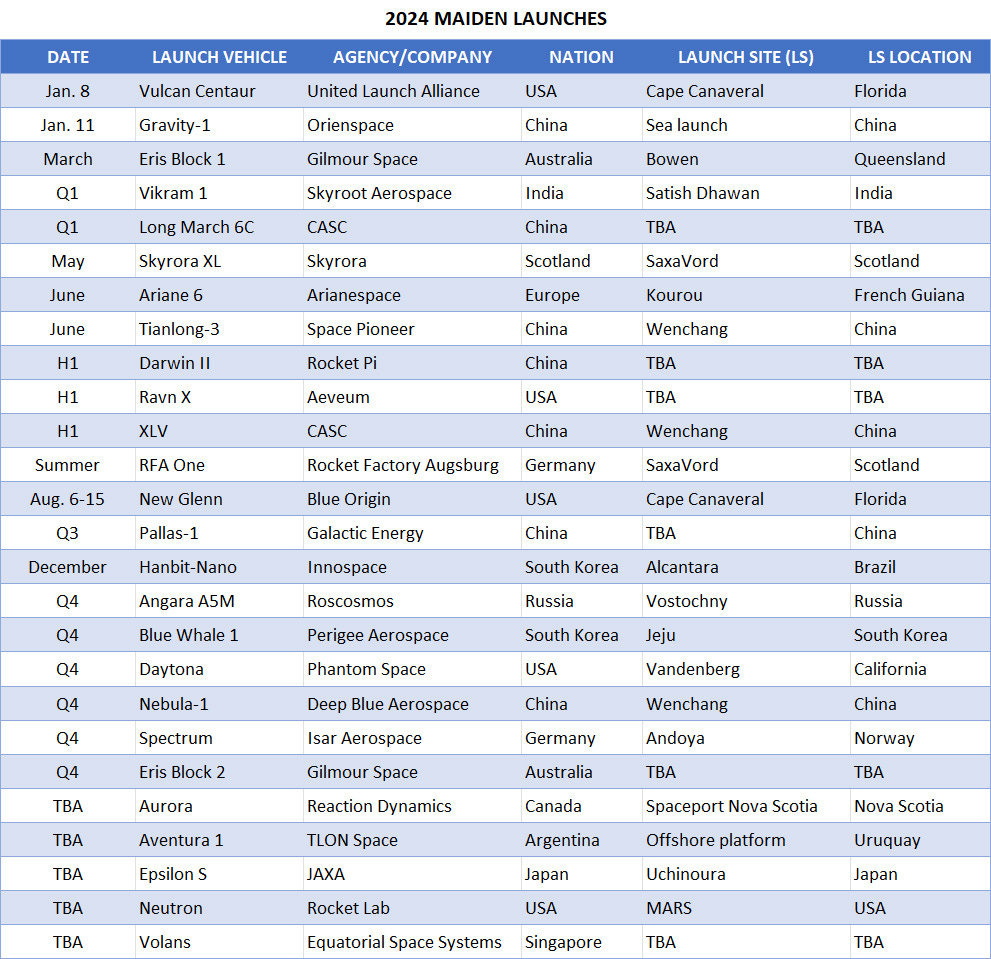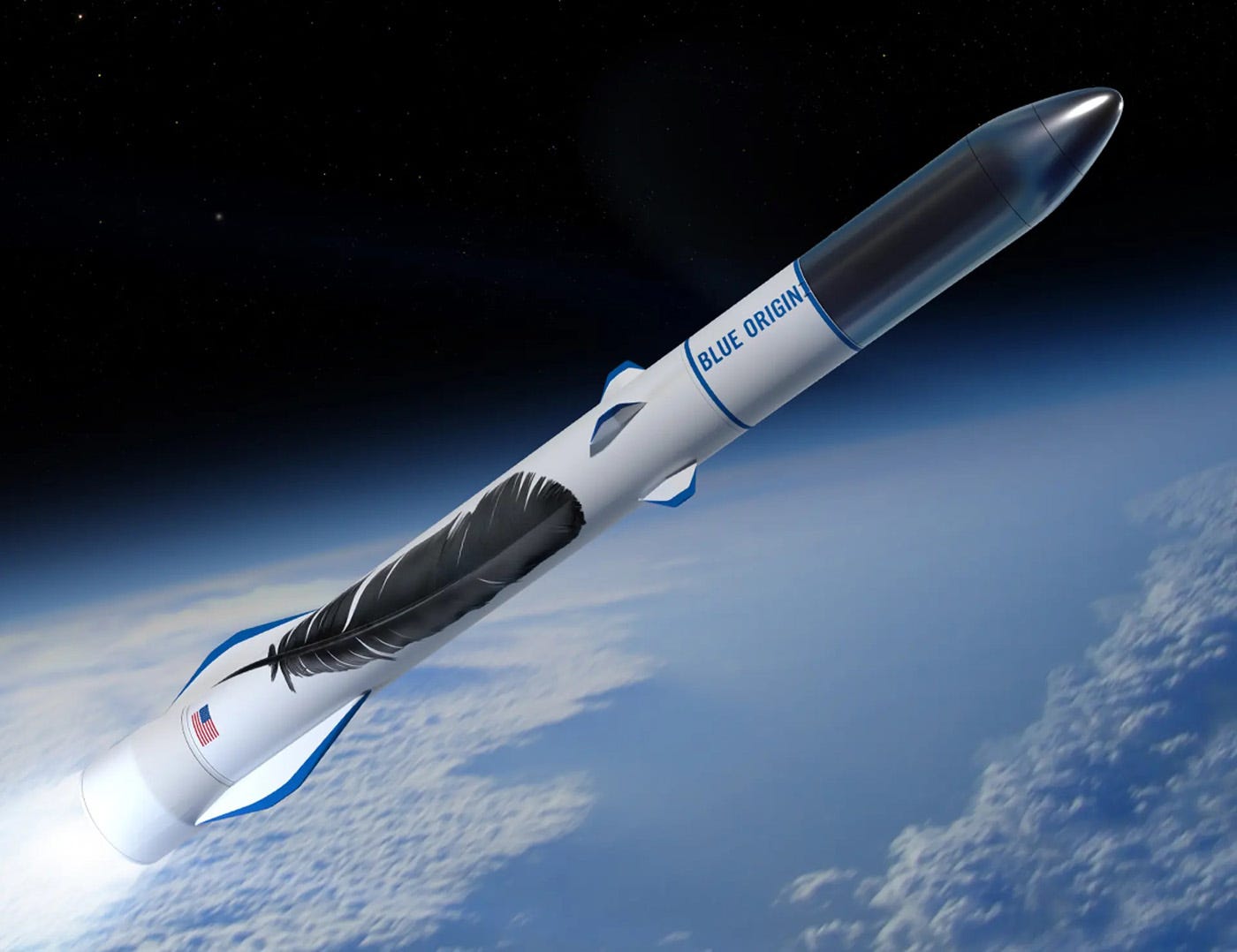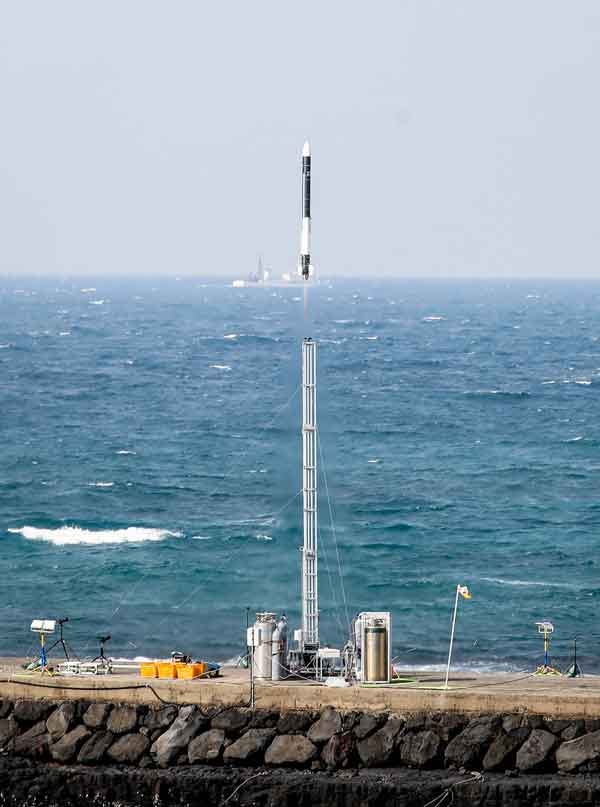Vulcan Centaur Launch the First of Many Maiden Flights
More than 20 boosters from 9 nations are preparing for their closeups
Updated on Jan. 13 to include information about the Neutron, Volans and XLV launch vehicles.
The first half of January saw the successful launch of two new launch vehicles as more than 20 others awaited their maiden flights.
United Launch Alliance’s (ULA) Vulcan Centaur launched Astrobotic Technology’s Peregrine 1 lunar lander on Monday. ULA officials said the launch went exactly as planned. Peregrine 1 later suffered a fuel leak caused by a faulty valve that will prevent it from reaching the lunar surface. Astrobotic said the leak was not a result of the launch.
On Thursday, Orienspace Technology’s Gravity-1 rocket lifted off from a ship in the Yellow Sea. The booster placed the Yunyao-1 18-20 meteorology satellites into orbit for the Chang Guang Satellite Technology Corporation.
Gravity-1 is an all solid-fuel rocket with three stages and four solid boosters. The most powerful solid-fuel launcher in the world, Gravity-1 is capable of placing 6,500 kg into low Earth orbit (LEO) or 3,700 kg into sun-synchronous orbit (SSO).
Many New Launchers
Vulcan Centaur and Gravity-1 were the first in a long line of new launch vehicles that could make their debuts over the next year or so. Rockets on the manifest include everything from the long-awaited debut of Blue Origin’s New Glenn booster capable of launching more than 45,000 kg to an Argentine booster that will loft 25 kg into orbit from an ocean platform off the coast of Uruguay.
Startup companies in Australia, Argentina, Canada, Germany, India, Scotland, Singapore, South Korea, and the United States are looking to conduct maiden flights of their new rockets. Many of these launch vehicles are aimed at the small-satellite market that is largely dominated by SpaceX’s Falcon 9 Transporter rideshare missions.
Spaceports that could see their first orbital launches include Alcantara in Brazil, Andoya in Norway, Bowen in Australia, SaxaVord in Scotland, and Spaceport Nova Scotia in Canada. Europe’s spaceport in French Guiana and the Satish Dhawan Space Centre in India are set to host their first commercial launches by startup companies.
ULA, Blue Origin & Rocket Lab Move Forward
Vulcan Centaur’s successful launch was a major success for ULA, which has dealt with years of development delays. The launch vehicle is designed to replace the Atlas V and Delta IV Heavy rockets. Vulcan Centaur is capable of launching 27,200 kg into LEO or 7,000 kg to geosynchronous orbit GEO.
Vulcan Centaur’s launch was a key milestone for Blue Origin, which supplied two BE-4 engines for the booster’s first stage. ULA officials said the methane-liquid oxygen engines performed exactly as designed.
Blue Origin will use seven BE-4 engines to power the first stage of New Glenn, which is set to make its maiden flight in August. The rocket will be capable of placing more than 45,000 kg into LEO or more than 13,600 kg to geostationary transfer orbit (GTO). Blue Origin plans to recover the first stage for reuse.
On its maiden flight, New Glenn will launch the ESCAPADE Blue and ESCAPADE Gold satellites to Mars for the University of California Berkeley’s Space Sciences Laboratory. The spacecraft, which were built by Rocket Lab, will study the Red Planet’s magnetosphere. The project is part of NASA’s Small Innovative Missions for Planetary Exploration program.
Rocket Lab’s Neutron rocket is also expected to make its debut this year from the Mid-Atlantic Regional Spaceport in Virginia. The reusable rocket will be capable of launching 13,000 kg to LEO or 1,500 kg to Mars or Venus.
Europe’s Challenges
It’s a critical year for Europe with the maiden flight of Ariane 6 expected no earlier than June. Europe has been unable to launch large payloads on its own rockets since Ariane 5 was retired in July 2023.
There is one final launch of the Vega rocket scheduled for September. The larger Vega-C rocket will return to flight in November after being grounded for nearly two years following a failure in December 2022.
Two German startups are preparing for their first launches. Isar Aerospace plans to launch its Spectrum rocket from the Andoya Spaceport in northern Norway. Spectrum will be capable of launching 1,000 kg to LEO or 700 kg to SSO. It will be the first orbital launch from Andoya, which has long hosted suborbital sounding rocket flights.
Isar Aerospace also plans to launch a Spectrum rocket from Europe’s Spaceport in Kourou, French Guiana at a later date. It will be the first commercial launch by a startup company from the spaceport.
Rocket Factory Augsburg is targeting summer for the maiden flight of its RFA One booster from SaxaVord Spaceport in Scotland. The booster will be capable of launching 1,600 kg to LEO, 1,300 to SSO, or 450 kg to GTO.
Skyrora is also planning to launch its Skyrora XL rocket from SaxaVord. The rocket will be capable of launching up to 315 kg into SSO.
China’s New Launch Vehicles
Chinese companies are planning to launch six new boosters and a variant of the Long March 6 rocket on their maiden flights this year.
Space Pioneer will launch the Tianlong-3 rocket with a payload capacity comparable to SpaceX’s Falcon 9 and a reusable first stage. The booster will be capable of lifting 17,000 kg into LEO or 14,000 kg into SSO. Tianglong-3 will be able to launch dozens of satellites at a time in order to deploy large constellations.
Galactic Energy’s medium-lift Pallas-1 rocket will also feature a reusable first stage capable of landing back on Earth. The booster will be capable of launching 5,000 kg into LEO or 3,000 kg into SSO.
Other new Chinese boosters set to make their debut include Darwin II by Rocket Pi Deep Blue Aerospace’s Nebula 1, and XLV by the China Aerospace Science and Technology Corporation. Darwin II will be capable of launching 500 kg into LEO or 300 kg into SSO. Nebula 1 is aiming to place 1,000 kg into SSO. Very little is known about the XLV rocket.
Indo-Pacific Region Launcher Developments
Two South Korean startups are looking to add to that nation’s growing fleet of launch vehicles. Perigee Aerospace is planning the first orbital launch of its Blue Whale 1 rocket, which will be capable of placing 150 kg into SSO.
Innospace also plans to launch its Hanbit-Nano rocket from the Alcantara Space Center in Brazil. Hanbit-Nano will launch up to 90 kg to SSO. It will be the first orbital launch from Alcantara, which has hosted suborbital sounding rocket flights.
South Korea currently has two rockets, Nuri and the solid-fuel launch projectile, that have successfully launched satellites into orbit.
India’s Skyroot Aerospace is eyeing the inaugural launch of its Vikram 1 rocket from the Satish Dhawan Space Centre. It would be India’s launch by a private company. Vikram 1 is designed to launch 480 kg into LEO and 290 kg into SSO.
Gilmour Space is looking to give Australia a domestic launch capacity by launching its Eris Block 1 rocket. The booster will carry 305 kg to LEO or 215 kg to SSO. Later in the year, Gilmour could also launch the larger Eris Block 2 booster with a capacity of 1,000 kg to LEO or 750 kg to SSO.
Equatorial Space Systems of Sinapore is looking to launch its Volans rocket for the first time. The modular rocket will be capable of launching up to 500 kg to LEO.
Too Many Rockets?
It’s unlikely that all of the new boosters will launch this year. However, if the past is any guide, there will be a fair number of failures. Six of the eight launch vehicles that made their first flights last year didn’t reach orbit.
The big questions hanging many of these new launch vehicles is whether there’s a market for them. Launch providers such as Rocket Lab have had a difficult time dealing with SpaceX’s successful Transporter rideshare missions, which can place more than 100 small satellites into orbit at a time. Rocket Lab is building a larger booster as a result.
Space is hard. Making money transporting payloads there can be even harder.










